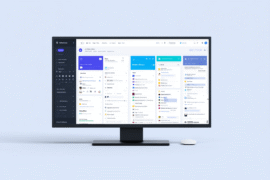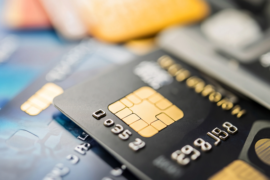This article may contain references to products or services from one or more of our advertisers or partners. We may receive compensation when you click on links to those products or services. Nonetheless, our opinions are our own.
The information presented in this article is accurate to the best of our knowledge at the time of publication. However, information is subject to change, and no guarantees are made about the continued accuracy or completeness of this content after its publication date.
- The Unique Features of Mint and EveryDollar
- Tips for Making the Most of EveryDollar as Your Mint Alternative
- Collaboration with Your Spouse: Making Budgeting a Team Effort
- Net Worth Tracking: A Comprehensive View of Your Financial Health
- EveryDollar and Mint’s Security Measures: Safeguarding Your Financial Data
- Mint vs. EveryDollar Comparison
- Comparison of Intuit Mint and EveryDollar
- Frequently Asked Questions
- 1. What is EveryDollar (ED) and who is it geared towards?
- 2. How does EveryDollar compare to Mint, and what are some differences?
- 3. What are the pros and cons of using the free vs. the premium version of EveryDollar?
- 4. What are some common criticisms of EveryDollar?
- 5. What is YNAB, and how does it compare to EveryDollar?
- Recommended Reads
The Unique Features of Mint and EveryDollar
When exploring personal finance tools, it’s important to know what each app offers. Mint is special because it is a complete platform. You can budget and view all your financial details in one place. It provides real-time updates for your transactions. It also organizes your spending by itself and gives you credit score monitoring. Here are some important points about Mint:
- Complete Financial Tracking: You can link several accounts. This way, you can see everything in one place.
- Flexible Budgeting: Set clear budget goals. You will get alerts when you are near your limit.
- Insights and Trends: This gives you personalized insights based on your spending habits. It helps you make better financial decisions.
EveryDollar makes budgeting simple by using a zero-based approach. This means each dollar you spend has a purpose. This straightforward setup helps you manage your money effectively. You can easily allocate funds to meet your financial goals. Some features of EveryDollar are:
- Easy Budget Creation: Create a budget just for you in a few minutes. It has a simple and user-friendly design.
- Goal Tracking: You can set financial goals and monitor them within your budget.
- No Ads: Enjoy an ad-free experience. This helps you focus on your budgeting.
Picking the right platform is all about your budget and what parts of personal finance you like. If you enjoy diving into details and want to check every aspect of your finances, Mint might be best for you. However, if you prefer a simple and straightforward way to budget, EveryDollar could be a great choice.
How EveryDollar Simplifies Budgeting for Your Financial Goals
If you want to manage your money, EveryDollar is an easy way to budget that suits your needs. It uses a method called zero-based budgeting. This means you plan how to spend every dollar you earn, focusing on what is most important to you. You can create your monthly budget in just a few minutes. The user-friendly layout lets you track your progress during the month without any pressure. Here are some of its best features:
- Customizable Budgeting Categories: You can change categories to fit your life, whether you are saving for a trip or paying off debt.
- User-Friendly Design: The easy layout makes managing your money feel simple and fun.
- Goal Setting: Create clear financial goals and see how you are doing. This helps you stay motivated and focused.
EveryDollar helps you be responsible with its sharing features. You can team up with family or financial partners. This way, everyone can see spending habits and stay informed. This openness builds better communication and helps you reach your financial goals. The app also has reminders for due dates and upcoming expenses. This makes it easier to manage your budget and creates a good habit. Imagine keeping track of every success, like paying off that annoying credit card or reaching your savings goal, all in one place.
Real User Experiences: Comparing Mint and EveryDollar
When you read what real users say about Mint and EveryDollar, you will see different thoughts. These opinions can help you pick the best budgeting app for you.
Many Mint users like how thorough it is. They enjoy features like automatic tracking of their transactions. They can also see all their accounts in one place. Users find Mint’s reporting tools helpful too. These tools let them track spending in several categories, which makes it easy to understand their spending habits.
On the other hand, some users think the app is too complicated. They feel overwhelmed with all the features. Some have also had issues or glitches that interrupt their budgeting work.
Fans of EveryDollar enjoy its simple design and clear budgeting system. Many users like the zero-based budgeting method. This method helps them use every dollar they earn. The app is easy to use, allowing people to enter expenses quickly. This makes it popular for those who want to track their money closely. However, some users feel they miss advanced features, like investment tracking and spending analysis. These features can make Mint feel like a better option for detailed financial planning.
Manual Import and Easy Categorization: Enhancing Budget Accuracy with EveryDollar
When comparing Mint and EveryDollar, it’s clear that both budgeting apps have their strengths and weaknesses. Mint stands out for its comprehensive approach, offering automatic tracking of transactions and detailed reporting tools. On the other hand, some users find it overwhelming due to its complexity and occasional glitches. In contrast, EveryDollar appeals to users with its simple design and zero-based budgeting method, ensuring every dollar is accounted for. While it lacks advanced features like investment tracking found in Mint, its ease of use and quick expense entries make it a popular choice for those looking to closely monitor their finances.
Insights and Automatic Import: EveryDollar Plus for Streamlined Financial Management
EveryDollar, with its user-friendly interface and emphasis on zero-based budgeting, attracts individuals seeking a straightforward approach to managing their finances. Its manual expense entry feature allows for quick and accurate tracking of expenses, ensuring that users have complete control over their budget. While lacking in advanced features such as investment tracking, EveryDollar excels in providing a hassle-free budgeting experience suitable for those prioritizing simplicity and efficiency in their financial planning. On the other hand, Mint’s strength lies in its comprehensive platform that offers automatic transaction tracking and detailed financial reporting tools.
Tips for Making the Most of EveryDollar as Your Mint Alternative
Making the most of EveryDollar is simple if you use a few easy strategies. First, set clear financial goals. You might want to save for a vacation, pay off debt, or build an emergency fund. Having specific goals will help keep you motivated. Second, remember to review your budget regularly. Life changes, and your expenses and income change, too. By checking your budget every week or month, you can make adjustments to stay on track.
Using features like recurring transactions can save time and help you stay organized. By setting up automatic entries for regular payments, like rent or subscriptions, you can pay more attention to other expenses that may change. Keep in mind the “Roll with the Punches” method from EveryDollar. This method helps you be flexible with your budget. If you spend more in one area, make sure to spend less in another.
Collaboration with Your Spouse: Making Budgeting a Team Effort
Approach this as a team effort, leveraging each other’s strengths to achieve your financial goals together. Start by establishing open communication about your individual financial habits, priorities, and long-term aspirations. By aligning your visions and setting mutual objectives, you lay down a solid foundation for collaborative budgeting.
Voted "Best Overall Budgeting App" by Forbes and WSJ
Monarch Money helps you budget, track spending, set goals, and plan your financial future—all in one app.
Get 50% OFF your first year with code MONARCHVIP
Net Worth Tracking: A Comprehensive View of Your Financial Health
It encompasses all your assets and liabilities, providing insight into your overall financial standing. By regularly tracking your net worth, you can monitor progress towards your financial goals and make informed decisions to enhance your financial well-being. Remember, building wealth is a journey that requires diligent tracking and evaluation of your net worth.
EveryDollar and Mint’s Security Measures: Safeguarding Your Financial Data
EveryDollar and Mint both offer robust security measures to safeguard your financial data. With the increasing threat of cyber breaches, choose a budgeting platform that prioritizes the protection of your sensitive information. From encryption protocols to multi-factor authentication, these tools are equipped with the latest technology to ensure that your data remains secure. By utilizing these security features, you can have peace of mind while managing your finances online. Remember, when selecting between EveryDollar and Mint, consider not only their budgeting functionalities but also their commitment to keeping your financial information safe from unauthorized access.
Mint vs. EveryDollar Comparison
When comparing Mint and EveryDollar, it’s important to consider their approach to net worth tracking. Your net worth provides a comprehensive view of your financial health by analyzing assets and liabilities. Both platforms offer tools to monitor your progress towards financial goals, emphasizing the significance of regular assessment for informed decision-making. Moreover, security is paramount in the digital age. Both EveryDollar and Mint prioritize safeguarding financial data through encryption and multi-factor authentication. By choosing a platform with robust security measures, you can manage your finances online with confidence.
Comparison of Intuit Mint and EveryDollar
| Feature | Intuit Mint | EveryDollar |
|---|---|---|
| Primary Focus | Comprehensive financial tracking, budgeting, and insights. | Zero-based budgeting, debt management, and financial education. |
| Budgeting Approach | Automated categorization of transactions, customizable budgets, and spending tracking. | Manual, zero-based budgeting (every dollar assigned a purpose) emphasizes planned spending. |
| Debt Management | Tracks debt balances, provides insights into debt repayment, and offers credit score monitoring. | Focuses on the “debt snowball” method, prioritizing debt repayment as a core principle. |
| Investment Tracking | Tracks investments, provides portfolio reviews, and monitors asset allocation. | Primarily focuses on budgeting and debt; limited investment tracking. |
| User Interface/Experience | Automated, visually driven, and comprehensive dashboard. | Simple, user-friendly interface designed for manual budgeting. |
| Cost | Free (supported by ads and offers). | Free version with basic features; paid version (EveryDollar Plus) with bank syncing and other premium features. |
| Target Audience | Individuals seeking a comprehensive review of their finances, automated tracking, and insights. | Individuals focused on active budgeting, debt reduction, and following the Ramsey Solutions financial principles. |
| Strengths | Automated transaction categorization, comprehensive financial review, free basic service. | Strong budgeting framework, debt snowball method, alignment with Ramsey Solutions’ principles, user-friendly. |
| Weaknesses | Relies on automated categorization, which may require manual adjustments; ad-supported. | Requires manual transaction entry in the free version; limited investment tracking. |
| Bank Syncing | Automatic bank syncing | The free version requires manual transaction entry. Paid version has bank syncing. |
| Financial Philosophy | Provides an idea so users can make their own financial decisions | Follows the Dave Ramsey financial principles and promotes a specific system. |
Frequently Asked Questions
1. What is EveryDollar (ED) and who is it geared towards?
EveryDollar is a budgeting app associated with Dave Ramsey’s financial advice, particularly his “Baby Steps” program. It’s designed as a zero-based budgeting tool, where you allocate every dollar of income to a specific category. It seems most suitable for those who align with Ramsey’s approach and are committed to actively tracking expenses.
2. How does EveryDollar compare to Mint, and what are some differences?
Mint was a more comprehensive personal finance tool that automatically linked to bank, credit card, and investment accounts to track balances and spending. EveryDollar, in its free version, requires manual transaction entry. While the paid premium version of EveryDollar allows for account linking, some users find that it does not link to all institutions and account types as reliably as Mint once did. Mint also provided net worth tracking, which EveryDollar lacks (though users can create their own in spreadsheets).
The free version of EveryDollar offers a basic zero-based budgeting framework but requires manual transaction entry. This can be time-consuming but promotes awareness of spending. The premium version adds features like automatic bank account linking, which saves time but comes at a cost (around $99/year) and isn’t always reliable in linking to all accounts.
4. What are some common criticisms of EveryDollar?
Common criticisms include its cost relative to features, the fact that its functionality isn’t much more than a fancy spreadsheet, and its strong alignment with Dave Ramsey’s financial philosophy (which may not suit everyone). Some users have found the app buggy and prone to crashing. Some people are not fans of the debit card-only payment option.
5. What is YNAB, and how does it compare to EveryDollar?
YNAB (“You Need a Budget”) is another popular budgeting app that is often mentioned as a strong alternative to EveryDollar. YNAB is said to have a steeper learning curve; it’s also described as more flexible and powerful, particularly with browser extensions. YNAB emphasizes assigning dollars you have to categories, compared to EveryDollar’s method of planning where your income will go. Some users feel YNAB is a safer budgeting method.

Reviewed and edited by Albert Fang.
See a typo or want to suggest an edit/revision to the content? Use the contact us form to provide feedback.
At FangWallet, we value editorial integrity and open collaboration in curating quality content for readers to enjoy. Much appreciated for the assist.
Did you like our article and find it insightful? We encourage sharing the article link with family and friends to benefit as well - better yet, sharing on social media. Thank you for the support! 🍉
Article Title: Mint vs. EveryDollar: Which Budgeting App Suits Your Financial Goals?
https://fangwallet.com/2025/06/15/mint-vs-everydollar-which-budgeting-app-suits-your-financial-goals/The FangWallet Promise
FangWallet is an editorially independent resource - founded on breaking down challenging financial concepts for anyone to understand since 2014. While we adhere to editorial integrity, note that this post may contain references to products from our partners.
The FangWallet promise is always to have your best interest in mind and be transparent and honest about the financial picture.
Become an Insider

Subscribe to get a free daily budget planner printable to help get your money on track!
Make passive money the right way. No spam.
Editorial Disclaimer: The editorial content on this page is not provided by any of the companies mentioned. The opinions expressed here are the author's alone.
The content of this website is for informational purposes only and does not represent investment advice, or an offer or solicitation to buy or sell any security, investment, or product. Investors are encouraged to do their own due diligence, and, if necessary, consult professional advising before making any investment decisions. Investing involves a high degree of risk, and financial losses may occur including the potential loss of principal.
Source Citation References:
+ Inspo
There are no additional citations or references to note for this article at this time.












































